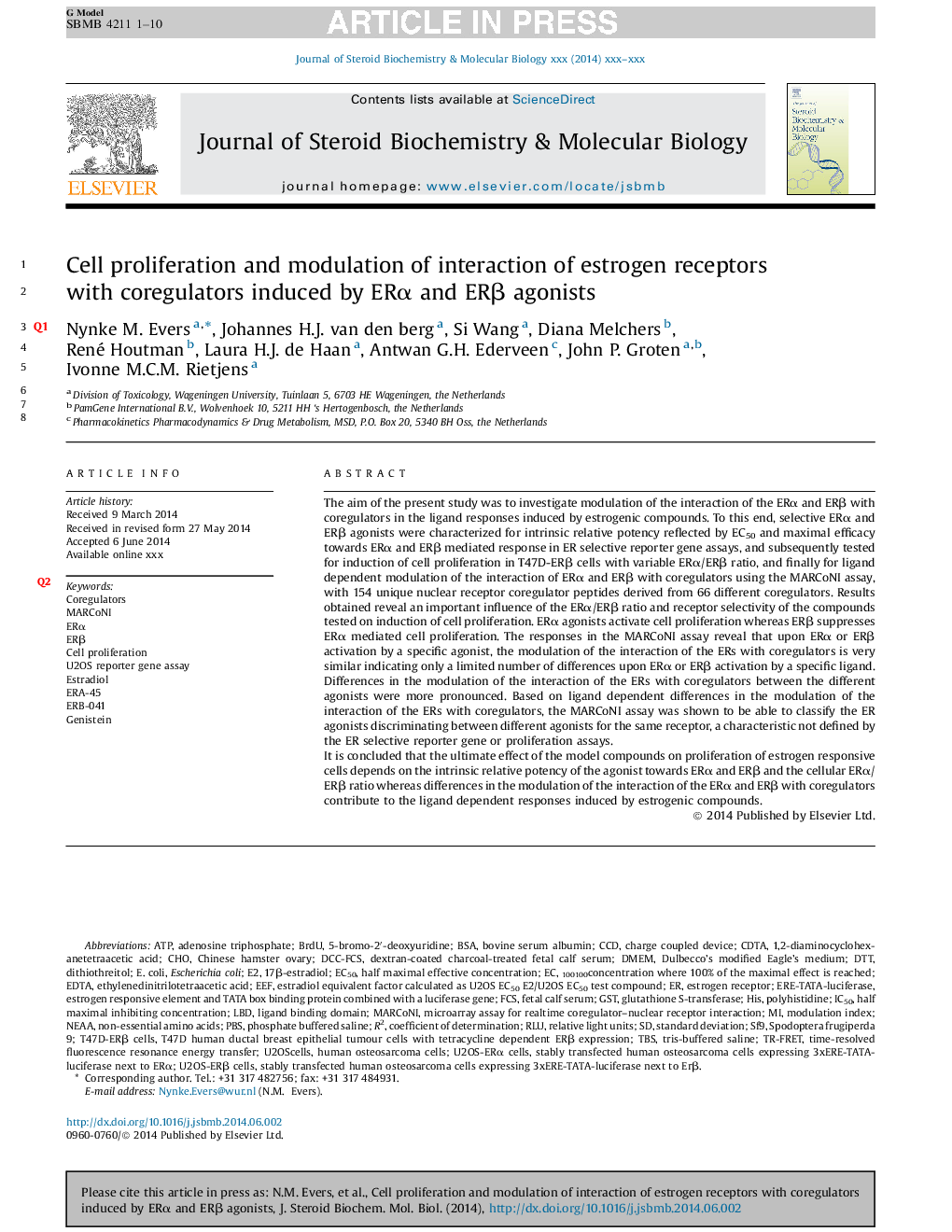| Article ID | Journal | Published Year | Pages | File Type |
|---|---|---|---|---|
| 8338777 | The Journal of Steroid Biochemistry and Molecular Biology | 2014 | 10 Pages |
Abstract
It is concluded that the ultimate effect of the model compounds on proliferation of estrogen responsive cells depends on the intrinsic relative potency of the agonist towards ERα and ERβ and the cellular ERα/ERβ ratio whereas differences in the modulation of the interaction of the ERα and ERβ with coregulators contribute to the ligand dependent responses induced by estrogenic compounds.
Keywords
Sf9DTTIC50GSTTBSFCSERαERβRLUU2OS cellsEC50eefNEAACDTATR-FRETEscherichiacoliDCC-FCSEC100Spodoptera frugiperda 9CCDE. coliPBSLBDDMEM17β-estradiol5-bromo-2′-deoxyuridineBSAAdenosine TriphosphateATPbovine serum albuminEDTAEthylenediaminetetraacetic acidEstradiolnon-essential amino acidsTime-resolved fluorescence resonance energy transferstandard deviationChoBrdUChinese Hamster OvaryTris-buffered salineCell proliferationHISligand binding domaindithiothreitolfetal calf serumHuman osteosarcoma cellsmodulation indexcharge coupled devicecoefficient of determinationPhosphate buffered salineGenisteincoregulatorsDulbecco’s modified eagle’s mediumhalf maximal effective concentrationrelative light unitsPolyhistidineglutathione S-transferaseEstrogen receptor
Related Topics
Life Sciences
Biochemistry, Genetics and Molecular Biology
Biochemistry
Authors
Nynke M. Evers, Johannes H.J. van den Berg, Si Wang, Diana Melchers, René Houtman, Laura H.J. de Haan, Antwan G.H. Ederveen, John P. Groten, Ivonne M.C.M. Rietjens,
